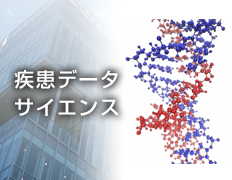c-Met affects gemcitabine resistance in mouse model of pancreatic cancer (Oncology Letters, 2016 )
In collaboration with the Department of Surgery, Osaka University (Profs. Masaki Mori and Yuichiro Doki), Noguchi et al. studied a mouse Kras/Met model of pancreatic cancer stem cells (CSCs) and showed that c-Met inhibition in Kras mice significantly decreased pancreatic intraepithelial neoplasia (PanIN) lesions, suggesting that complete c-Met signal inhibition with chemotherapy could be useful for control of pancreatic malignant features.
-
Fetal-hepatocyte-derived culture medium elicits adipocyte differentiation into bile-duct-cell lineage in mouse (Biomedical Reports, 2016 )
In collaboration with the Department of Surgery, Osaka University (Profs. Masaki Mori and Yuichiro Doki), Ogawa et al. studied fetal tissues of mouse and showed that fetal-hepatocyte-derived factors elicit the differentiation to bile-duct-cell lineages, suggesting that fetal cells possess multiple potentials that are absent in adults.
-
Mathematical linkage analysis of transcriptome and metabolome in cancer stem cell (Scientific Reports, 2016)
The bioinformatics and computational modeling are expected to offer innovative approaches in human medical science. In collaboration with the Department of Surgery, Osaka University (Profs. Yuichiro Doki and Masaki Mori), as well as the Faculty of Mathematics, Kyushu University (As. Prof. Hidetoshi Matsui), Koseki et al. reported the computational analysis and prediction of transcriptome and metabolome datasets, which were identified from fluorescent-based visualized system of chemo-resistant cancer stem cells in human esophagus. The present study fastens the further rational to innovative drug discovery against robust cancer stem cells.
-
In collaboration with the Department of Surgery, Osaka University (Profs. Masaki Mori and Yuichiro Doki), Sueda et al. demonstrate that selective BRAF V600E inhibition activates AMP-activated protein kinase (AMPK), which induces autophagy as a mechanism of therapeutic resistance in human cancers. Present experiments suggest that the control of autophagy contributes to overcome the chemoresistance of BRAF V600E cancer cells.
-
In collaboration with the Department of Surgery, Osaka University (Profs. Masaki Mori and Yuichiro Doki), Hasegawa et al. showed that Sox4/Ezh2 axis was closely associated with the prognosis in pancreatic cancer patients. Sox4 is indispensable for epithelial-mesenchymal transition (EMT) and regulates various kinds of master regulators. Sox4 induces the transcription of Ezh2, the histone methyltransferase, which was counteracted by miR-335. The expression study with laser captured microdissection (LCM) samples indicated a critical role of the Sox4/Ezh2 axis in the EMT control of pancreatic cancer.
-
In collaboration with the Department of Surgery, Osaka University (Profs. Masaki Mori and Yuichiro Doki), Konno et al. found a unique role of the embryonic miR-369- HNRNPA2B1 axis in controlling metabolic enzyme function. The data suggest a novel pathway linking epigenetic, transcriptional, and metabolic control in cell reprogramming, and may be useful for the novel diagnostic approaches and therapies in regenerative medicine and cancer research.
-
In collaboration with the Department of Surgery, Osaka University (Profs. Masaki Mori and Yuichiro Doki), Asukai et al. studied the tumor immunology. Immunohistochemical analysis showed that the expression of IL-6, IL-17RA, and peritumoral IL-17A significantly correlated with a poor outcome. Further, high preoperative plasma levels of IL-6 in patients with cholangiocarcinoma (ICC) corresponded with significantly shorter disease-free survival (DFS). Our data suggested that IL-6, peritumoral IL-17 + cells, and IL-17RA expression are postoperative useful markers for predicting recurrence in patients with ICC.
-
In the collaboration with the Department of Radiation Oncology, Osaka University (Prof. Ogawa, K.), Baek , et al. update the information regarding carbon ion beam radiation and new radio sensitizers. Given that cancer stem cells (CSCs) are a small population of cells in cancer with stem-like properties such as cell proliferation, and CSCs are therapy-resistant and cause cancer metastasis and recurrence, one key issue in cancer therapy may be the carbon ion beam radiotherapy, being a promising treatment for CSCs. Evidence indicates that the carbon ion beam is more effective against CSCs than the conventional X-ray beam. Combination therapies of radiosensitizing microRNAs and carbon ion beam radiotherapy may be a promising cancer strategy.
-
Susceptibility of pancreatic cancer stem cells to reprogramming. (Cancer Sci, 2015)
In collaboration with the Department of Surgery, Osaka University (Profs. Masaki Mori and Yuichiro Doki), Noguchi et al. studied the susceptibility of pancreatic cancer stem cells (CSCs) to reprogramming. Given that previous reports have indicated that reprogramming technologies may be useful for altering the malignant phenotype of epithelial cancer cells, the study may be useful for extensive modification of malignant features of pancreatic CSCs. The study focused on c-Met signaling, which has been identified as a marker of CSCs. The present study indicates that cells that expressed high levels of c-Met showed higher CSC properties, such as tumor-initiating capacity, and resistance to gemcitabine. Although further studies are necessary, it suggests the novel approach may be possible for cancer cell reprogramming .
-
Tumour-suppressive function of SIRT4 in human colorectal cancer (Br. J. Cancer, 2015)
SIRT4, which is localized in the mitochondria, is one of the least characterized members of the sirtuin family of nicotinamide adenine dinucleotide?dependent enzymes that play key roles in multiple cellular processes such as metabolism, stress response and longevity. In collaboration with the Department of Surgery, Osaka University (Profs. Masaki Mori and Yuichiro Doki) , Miyo et al. studied the significance of SIRT4 in human colorectal cancer. SIRT4 expression decreased with the progression of invasion and metastasis, and a low expression level of SIRT4 was correlated with a worse prognosis. SIRT4 has a tumour-suppressive function and may serve as a novel therapeutic target in colorectal cancer.

